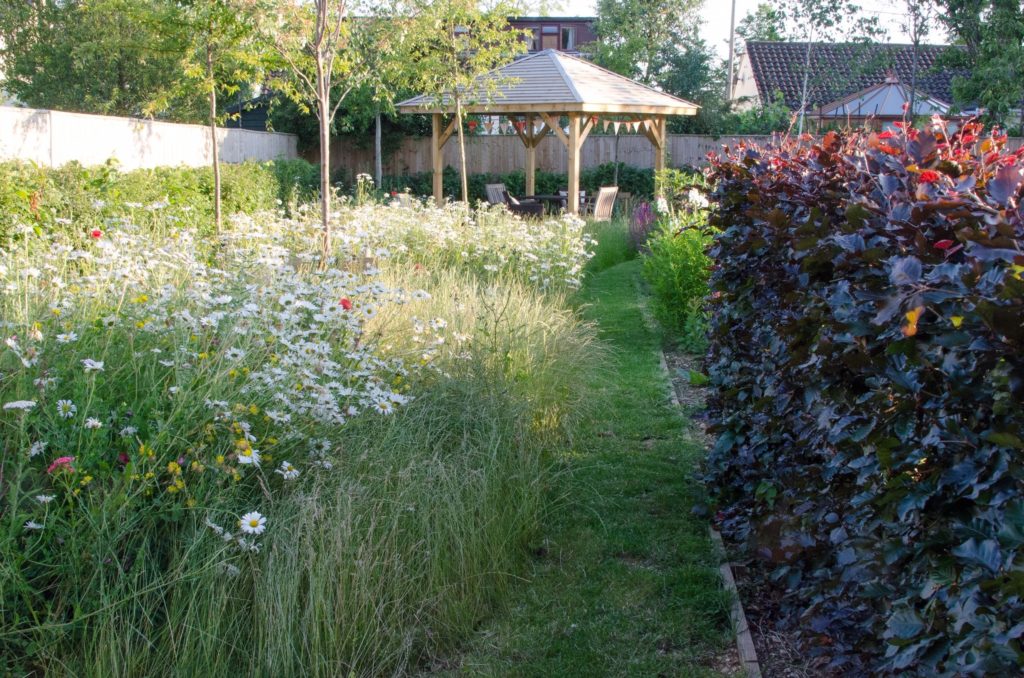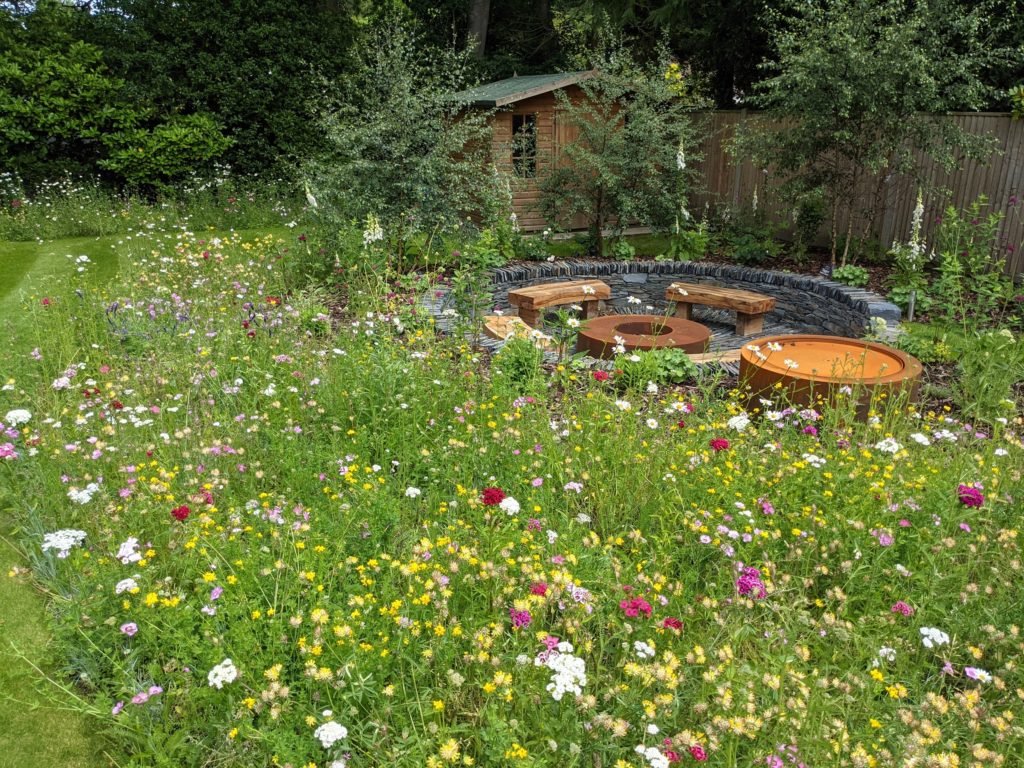With the days warming it’s time to take a look at the emerging gardening trends for 2022.
Top designers from the Society of Garden Designers have recently shared their predicted garden design trends for the year ahead, and it makes for very interesting reading.
Likewise, Clare Foster, garden editor for House & Garden, has also recently shared her thoughts as to where she feels the big garden wins will be this year.
No prizes for guessing that a continued drive for sustainability is the overriding theme, with climate change the biggest single influencer in 2022.
We’ve summarised some of the key predictions for you below and we hope you enjoy delving into the hot topics and cool designs that are expected to make waves this year.
Wild Gardens
“The trend for (this year) will be the immersive and natural wildlife garden,” says Ann-Marie Powell MSGD. Ann-Marie predicts that ’nature-scaping’ and ‘curated wildling’ will be the buzzwords of 2022. This theory is echoed by Ana Sanchez-Martin MSGD of The Garden Company who says, “I am hoping that more and more people will jump on the ‘Rewilding wagon’! One of the positive effects of the pandemic is that people now understand the therapeutic effects of gardening.”
There will be a real movement towards wildlife-friendly, plant-led gardens that enable everyone to do their bit for the environment. The heightened worry about climate change brings more understanding of the need for biodiversity, so gardens will be fizzing with plant and insect life. People will retune their eye to an aesthetic that is natural and perhaps a little rough around the edges, appreciating the character this brings.

Wabi-sabi Garden
“I think we will see many gardens designed to follow a wabi-sabi philosophy, meaning that people will be embracing a less perfect aesthetic,” says Filippo Dester MSGD of Garden Club London. Filippo believes that, in the context of the garden, this will lead to a greater focus on natural materials that are rich in texture and neutral in colour. “I think we’ll see the deeper meaning to wabi-sabi in the approach to garden design”, he says. “We will begin to accept the beauty of the ‘imperfect’ and the ever-changing nature of materials such as stone and wood and plants themselves. We will veer away from the sleek, immaculate look that often characterises urban gardens.”
Low Carbon Gardens
“I feel there is a big movement towards good environmental schemes, supporting wildlife and reducing our carbon footprint,” says Jilayne Rickards of Jilayne Rickards Contemporary Garden Design.
Landscaping
Ben Chandler believes the rising cost of imported goods and an increased awareness of our carbon footprint means there will be an emphasis on locally sourced materials, plants and products. “I hope this also means more support for smaller specialist plant nurseries and brings opportunities to local makers and craftspeople,” he adds.
Planting
For Ann-Marie Powell, using more plants to lock carbon into the soil is a top priority. “It negates the requirement for extra imported hard landscaping, looks beautiful and attracts beneficial insects too, so it’s a win-win” she says. “I would love to find more suppliers who grow their plants peat-free too.”
(In line with public concern about the damage peat extraction does to our natural environment, Wildflower Turf Limited is committed to an annual reduction in our use of peat as a growing medium. We are already continuing to reduce the peat content of our turf and our Meadowscape Pro™ product is already 100% peat-free!)

Gardens For Well-Being
Another reason for surrounding ourselves with plants is for their therapeutic value, with Biophilia – the basic human need to interact with nature – the word on everyone’s lips. The pandemic has made us much more aware of our own mental health and we have learnt firsthand how our gardens have helped us through this difficult time.
Low Impact Design
Out go radical garden makeovers and in come low-impact schemes that work with the existing features and framework, lessening the need for large machinery, soil replacement and new structures, and upcycling materials in the garden to reduce the carbon footprint.
Other predictions include that of the inclusion of luxuries, such as natural swimming pools, into home gardens, and tapestry lawns and patchwork paths. Re-using, recycling and repurposing materials is also set to be a key trend along with vibrant jewel colours as we all look for a colour lift, and planting schemes that support pollinators.
What trends have you been seeing this year? Drop us a line, we’d love to hear from you on this topic!